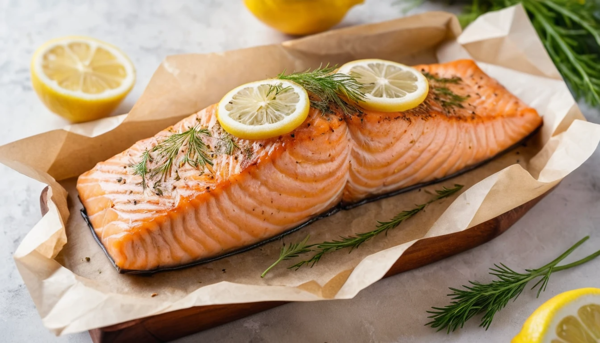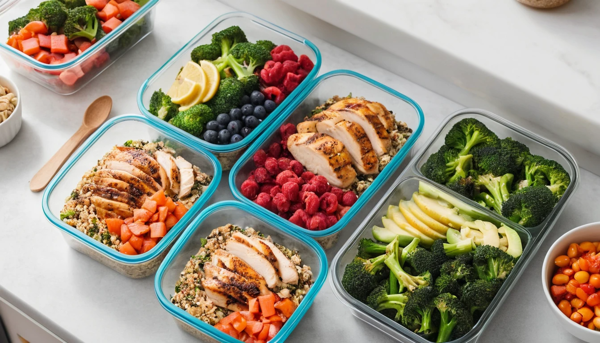Eco-friendly food packaging trends are transforming the food industry with sustainable, biodegradable, and compostable materials that help reduce waste and protect the planet.
Eco-friendly food packaging trends focus on sustainability through compostable, biodegradable, and recyclable materials, reducing environmental impact while maintaining product safety and freshness.
Eco-Friendly Food Packaging Trends 🌍
Have you ever stopped mid-meal and wondered what happens to the packaging once you’re done? Chances are, it ends up in a landfill. But times are changing — fast. Today, businesses and consumers are turning toward eco-friendly food packaging that’s just as functional as it is planet-friendly.
In this article, we’ll unpack the latest trends shaping the sustainable packaging world, explore innovative materials, and show how businesses can stay ahead of the curve without breaking the bank.
Understanding The Shift Toward Sustainable Packaging ♻️
Eco-friendly packaging isn’t just a buzzword — it’s a global movement. As awareness about plastic waste grows, consumers are demanding packaging that’s good for both food and the planet.
The goal is simple: reduce environmental impact while maintaining quality and convenience. More companies are now switching to compostable, biodegradable, or recyclable materials to meet both legal standards and customer expectations.
The Environmental Impact Of Traditional Packaging 🌫️
Plastic pollution is one of the biggest global challenges. Traditional packaging materials like single-use plastics and Styrofoam don’t break down for hundreds of years.
This contributes to ocean pollution, greenhouse gas emissions, and overflowing landfills. By contrast, eco-friendly packaging minimizes waste and conserves energy during production. It’s not just good PR — it’s a necessity for a sustainable future.
Top Materials Used In Eco-Friendly Food Packaging 🌾
The packaging landscape is evolving quickly. Businesses are exploring materials that are safe, sustainable, and visually appealing. Here are some trending materials:
| Eco-Friendly Material | Description | Common Uses |
| Bamboo Fiber | Renewable, compostable | Takeout containers, cutlery |
| PLA (Polylactic Acid) | Bioplastic from cornstarch | Cups, straws, lids |
| Recycled Paperboard | Made from post-consumer waste | Food boxes, wraps |
| Mushroom Packaging | Grown from mycelium | Protective food containers |
Each material brings unique benefits — from renewable sourcing to compostability — making them smart alternatives to petroleum-based plastics.
Compostable Vs. Biodegradable Packaging: What’s The Difference? 🌱
These two terms often get mixed up, but they aren’t the same.
- Biodegradable means the material can break down naturally, though it may take months or years.
- Compostable means it breaks down into nutrient-rich soil under the right conditions, usually within 90 days.
👉 Compostable packaging is the clear winner for zero-waste initiatives.
The Rise Of Minimalist Packaging Design ✨
Less really is more. Minimalist packaging reduces material use, lowers costs, and gives brands a clean, modern aesthetic.
By using simple designs and fewer colors, brands can save ink and energy while still catching attention. Consumers also associate minimalism with authenticity and sustainability — a double win.
Reusable Food Packaging Solutions ♻️
Reusable packaging is another rising star in the green trend. Think glass jars, stainless steel lunch boxes, and silicone pouches.
Restaurants and cafes are offering refill programs, while brands like Loop are reinventing the way consumers reuse packaging. The result? Less waste, more convenience, and strong customer loyalty.
Smart Packaging Technology Meets Sustainability 🤖
Innovation meets eco-consciousness in smart packaging — materials that track freshness, temperature, or shelf life using digital sensors.
These solutions help reduce food waste and improve supply chain efficiency. Plus, when combined with biodegradable materials, they create a powerful blend of tech and sustainability that’s redefining packaging.
Edible Packaging: The Future Of Zero Waste 🍽️
Imagine eating your coffee cup or snack wrapper. Sounds wild? It’s real!
Edible packaging made from materials like seaweed, rice paper, and potato starch is gaining traction. These options are safe, nutritious, and completely waste-free — the ultimate sustainability statement.
| Edible Material | Source Ingredient | Common Applications |
| Seaweed Film | Algae | Drink sachets, wraps |
| Rice Paper | Rice flour | Spring rolls, snack wraps |
| Potato Starch | Potatoes | Biodegradable utensils |
This innovation could revolutionize takeout and on-the-go snacks in the near future.
Plant-Based Packaging Innovations 🌿
Plant-based materials like sugarcane bagasse and cornstarch polymers are reshaping packaging production.
They decompose faster than plastic and leave no toxic residue. Plus, using agricultural by-products reduces waste at the source — making them a triple eco-win for the planet, businesses, and consumers.
How Brands Are Marketing Sustainability 🌎
Sustainability has become a marketing superpower. Brands that emphasize eco-conscious values attract loyal, value-driven customers.
From “green” logos to eco-certifications on labels, companies are showing transparency about their packaging choices — and consumers love it. Authentic storytelling makes a huge difference.
Consumer Demand For Eco-Friendly Packaging 💬
Today’s shoppers want brands that align with their values. Surveys show over 70% of consumers prefer eco-friendly packaging, even if it costs slightly more.
They’re also quick to call out “greenwashing,” so authenticity is key. Real change — not just clever branding — drives customer trust.
Government Regulations & Incentives ⚖️
Governments worldwide are tightening rules around packaging waste. From bans on single-use plastics to incentives for recyclable materials, regulations are pushing brands to adapt.
In the U.S., many states now enforce extended producer responsibility (EPR) laws — holding manufacturers accountable for their packaging’s end-of-life impact.
Challenges In Adopting Sustainable Packaging 😅
Going green isn’t always easy. Costs, supply chain limits, and lack of composting infrastructure can slow progress.
However, the long-term benefits — brand loyalty, compliance, and environmental impact — far outweigh the challenges. Forward-thinking companies see sustainability as an investment, not an expense.
Cost-Effective Ways To Go Green 💡
Small businesses can start with incremental changes like switching to paper-based wraps, bulk ordering sustainable materials, or using digital printing to reduce waste.
| Strategy | Benefit | Example |
| Bulk Purchasing | Lower unit cost | Order compostable cups in bulk |
| Digital Labels | Less ink waste | QR code menus |
| Local Suppliers | Reduced transport emissions | Regional packaging vendors |
Little steps add up fast — and customers will notice the effort.
Creative Packaging Ideas That Wow Customers 🎨
Who says eco-friendly can’t be beautiful? Brands are designing eye-catching, functional packaging that stands out while staying green.
Examples include seed paper wraps that grow plants after use, foldable boxes that turn into trays, and minimalist kraft designs with handwritten fonts. Sustainable design can spark curiosity and emotional connection.
The Future Of Eco-Friendly Food Packaging 🚀
Looking ahead, the packaging world is only getting greener. Expect innovations like AI-driven waste tracking, recycled ocean plastics, and fully circular packaging systems.
Businesses that embrace sustainability early will gain a competitive edge — both in reputation and customer trust. The future isn’t just about wrapping food. It’s about wrapping it responsibly.
Conclusion 🌎
Eco-friendly food packaging trends are more than a trend — they’re a transformation. From compostable materials and reusable containers to plant-based innovations and smart tech, sustainability is reshaping the way we think about packaging.
Every choice, no matter how small, helps create a cleaner planet and a brighter future for generations to come. 🌱
FAQs
- What Are The Best Eco-Friendly Food Packaging Materials?
The best options include bamboo fiber, PLA bioplastic, recycled paperboard, and mushroom-based packaging. These materials are biodegradable and reduce environmental impact. - How Can Small Businesses Switch To Sustainable Packaging?
Start small by using recyclable paper wraps, compostable utensils, and eco labels. Gradually transition as you find affordable suppliers. - Is Compostable Packaging Better Than Recyclable?
Yes, compostable packaging breaks down faster and returns nutrients to the soil, while recyclable materials still require processing. - Are Consumers Willing To Pay More For Eco Packaging?
Absolutely. Studies show that most consumers will pay slightly more for sustainable packaging that aligns with their values. - What’s Next In Eco-Friendly Packaging Trends?
Expect more plant-based innovations, edible packaging, and tech-enabled smart containers that reduce food waste and boost sustainability.










Leave a Reply